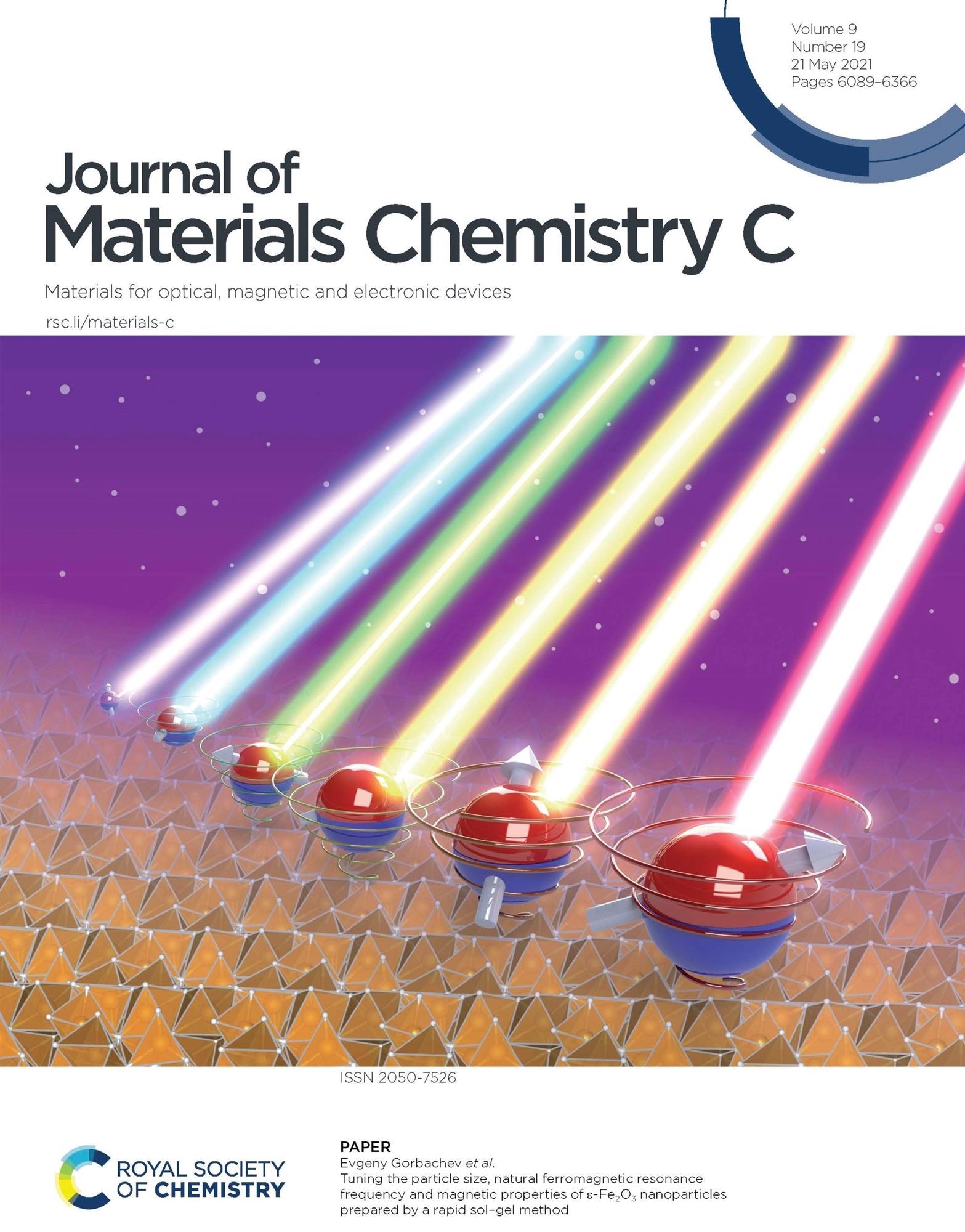Jun 24 2021
Material scientists have come up with a rapid method to produce epsilon iron oxide and have revealed its potential for advanced communications devices.
 Illustration of the change in absorption frequency for particles of different sizes. Image Credit: Journal of Materials Chemistry C.
Illustration of the change in absorption frequency for particles of different sizes. Image Credit: Journal of Materials Chemistry C.
The excellent magnetic properties of epsilon iron oxide make it one of the most sought-after materials, such as for durable magnetic recording and the upcoming 6G generation of communication devices.
The study has been published in the Journal of Materials Chemistry C — a journal of the Royal Society of Chemistry.
Iron oxide (III) is one of the most abundant oxides on the planet and it mostly exists in the form of the mineral hematite (or alpha iron oxide, α-Fe2O3). Maghemite (or gamma modification, γ-Fe2O3) is another common and stable modification. Hematite is commonly used in industry as a red pigment, while maghemite is used as a magnetic recording medium.
Both these modifications differ in the crystalline structure (gamma-iron oxide has cubic syngony and alpha-iron oxide has hexagonal syngony) and also in magnetic properties.
Apart from these forms of iron oxide (III), there are more unusual modifications, like epsilon-, zeta-, beta- and even glassy.
Among these, epsilon iron oxide, ε-Fe2O3 is the most attractive phase. This modification has a very high coercive force (the potential of a material to resist an external magnetic field).
At room temperatures, the strength reaches 20 kOe, which is similar to magnet parameters based on costly rare-earth elements. The material also absorbs electromagnetic radiation in the sub-terahertz frequency range (100 to 300 GHz) via the effect of natural ferromagnetic resonance.
The frequency of this resonance is a major criterion for using materials in wireless communications devices — for example, the 5G standard uses tens of gigahertz and the 4G standard uses megahertz.
The sub-terahertz range could probably be used as a working range in the sixth generation (6G) wireless technology, which is presently being prepared for active introduction in people’s lives from the early 2030s.
The resultant material is suitable for manufacturing absorber circuits or converting units at such frequencies. For instance, if composite ε-Fe2O3 nanopowders are used, paints can be made that absorb electromagnetic waves and thus protect rooms from extraneous signals, and also shield signals from external interception. Even the ε-Fe2O3 can be used in 6G reception devices.
Epsilon iron oxide is a very difficult and rare form of iron oxide to obtain. Currently, it is created only in very small quantities, and the process itself takes up to a month. This definitely rules out its extensive application.
The researchers have developed a new technique to speed the synthesis of epsilon iron oxide, bringing down the synthesis time to just one day (in other words, to perform a complete cycle of over 30 times faster), and boosting the amount of the resulting product.
The new method is cost-effective, can be easily reproduced, and can be effortlessly implemented in the industry. The materials required for the synthesis — silicon and iron — are among the most widespread elements on the planet.
Although the epsilon-iron oxide phase was obtained in pure form relatively long ago, in 2004, it still has not found industrial application due to the complexity of its synthesis, for example as a medium for magnetic—recording. We have managed to simplify the technology considerably.
Evgeny Gorbachev, Study First Author, and PhD Student, Department of Materials Sciences, Moscow State University
To successfully apply materials with record-breaking properties, their underlying physical properties should be studied. The lack of detailed study may result in ignoring the material for several years, as has happened many times in the history of science.
It was the collaboration of materials scientists from Moscow State University, who produced the compound, and MIPT physicists, who investigated it thoroughly, that made this development a success.
Materials with such high ferromagnetic resonance frequencies have enormous potential for practical applications. Today, terahertz technology is booming: it is the Internet of Things, it is ultra-fast communications, it is more narrowly focused scientific devices, and it is next-generation medical technology.
Dr. Liudmila Alyabyeva, PhD, Senior Researcher, Laboratory of Terahertz Spectroscopy, MIPT
Dr. Alyabyeva added, “While the 5G standard, which was very popular last year, operates at frequencies in the tens of gigahertz, our materials are opening the door to significantly higher frequencies (hundreds of gigahertz), which means that we are already dealing with 6G standards and higher. Now it's up to engineers, we are happy to share the information with them and look forward to being able to hold a 6G phone in our hands.”
The terahertz study was performed at the MIPT Laboratory of Terahertz Spectroscopy.
Journal Reference:
Gorbachev, E., et al. (2021) Tuning the particle size, natural ferromagnetic resonance frequency and magnetic properties of ε-Fe2O3 nanoparticles prepared by a rapid sol–gel method. Journal of Materials Chemistry C. doi.org/10.1039/D1TC01242H.